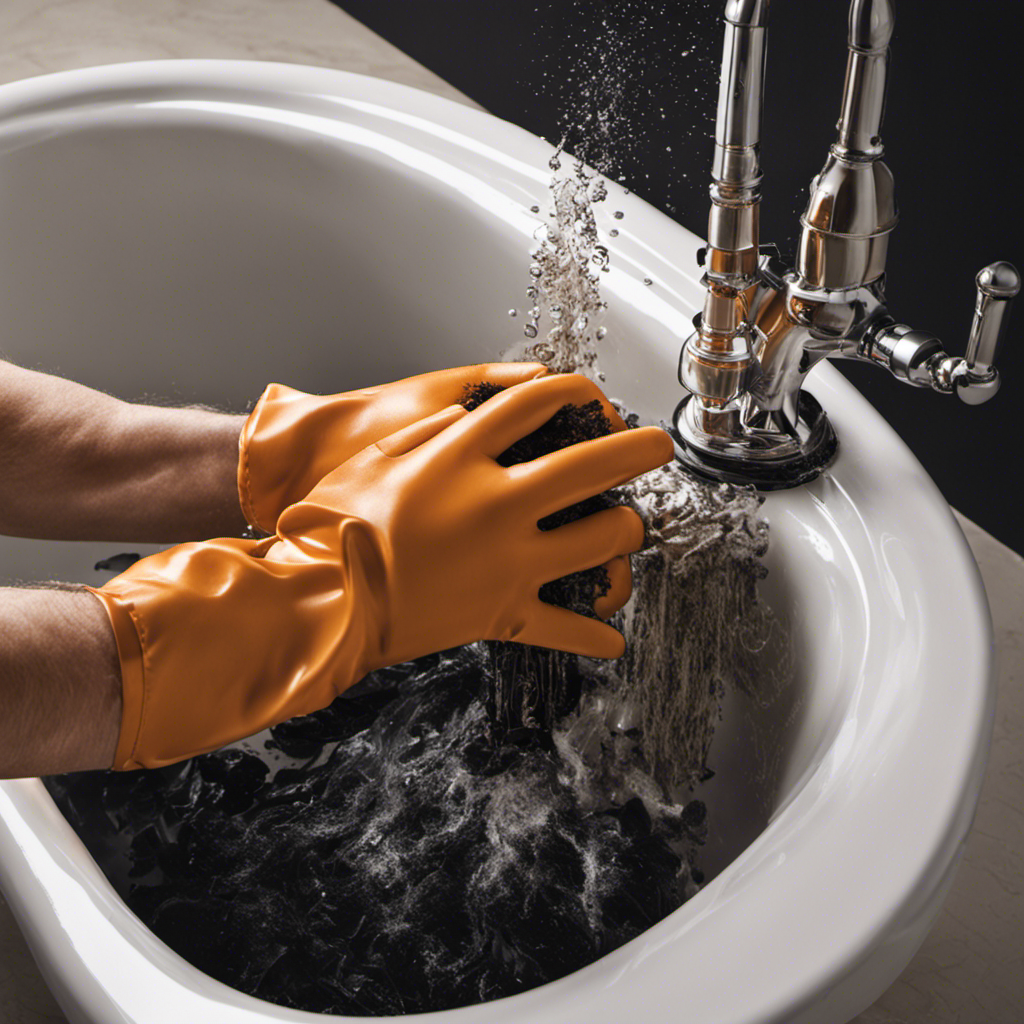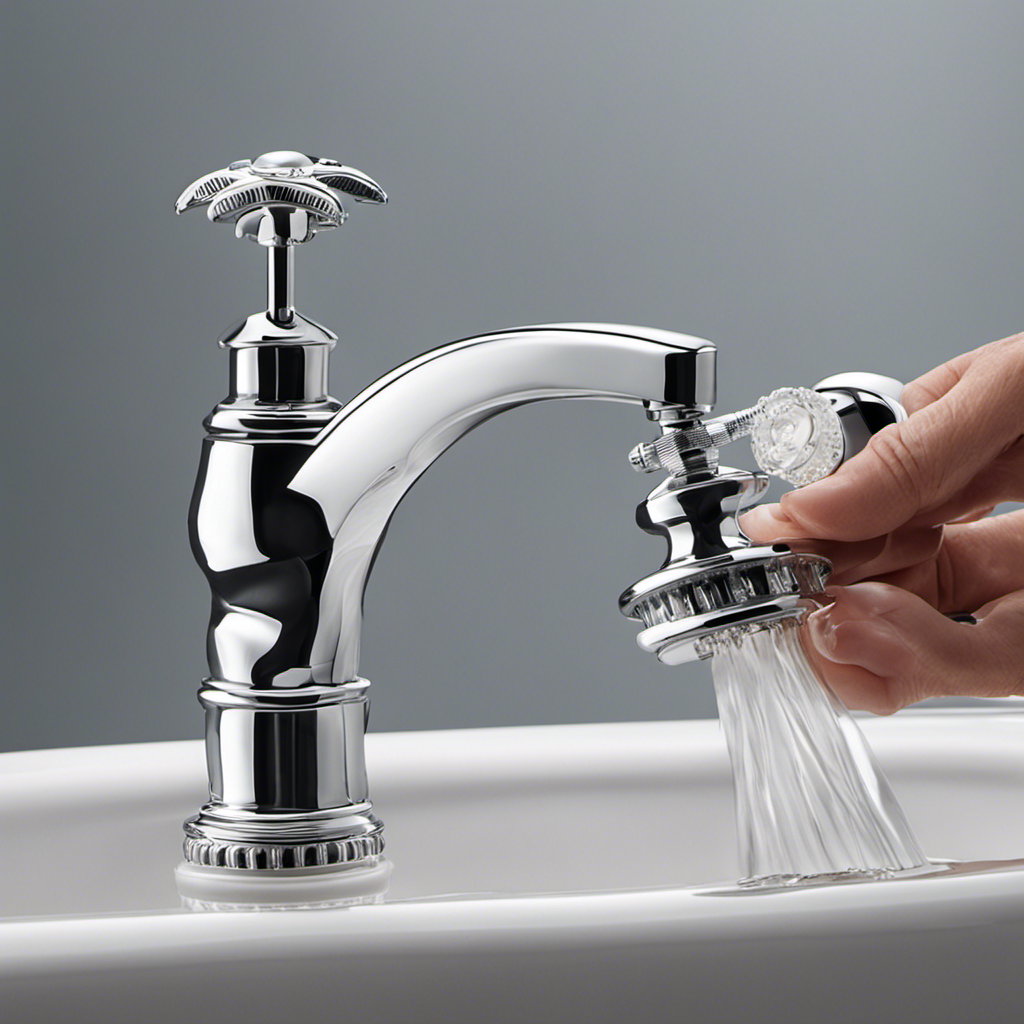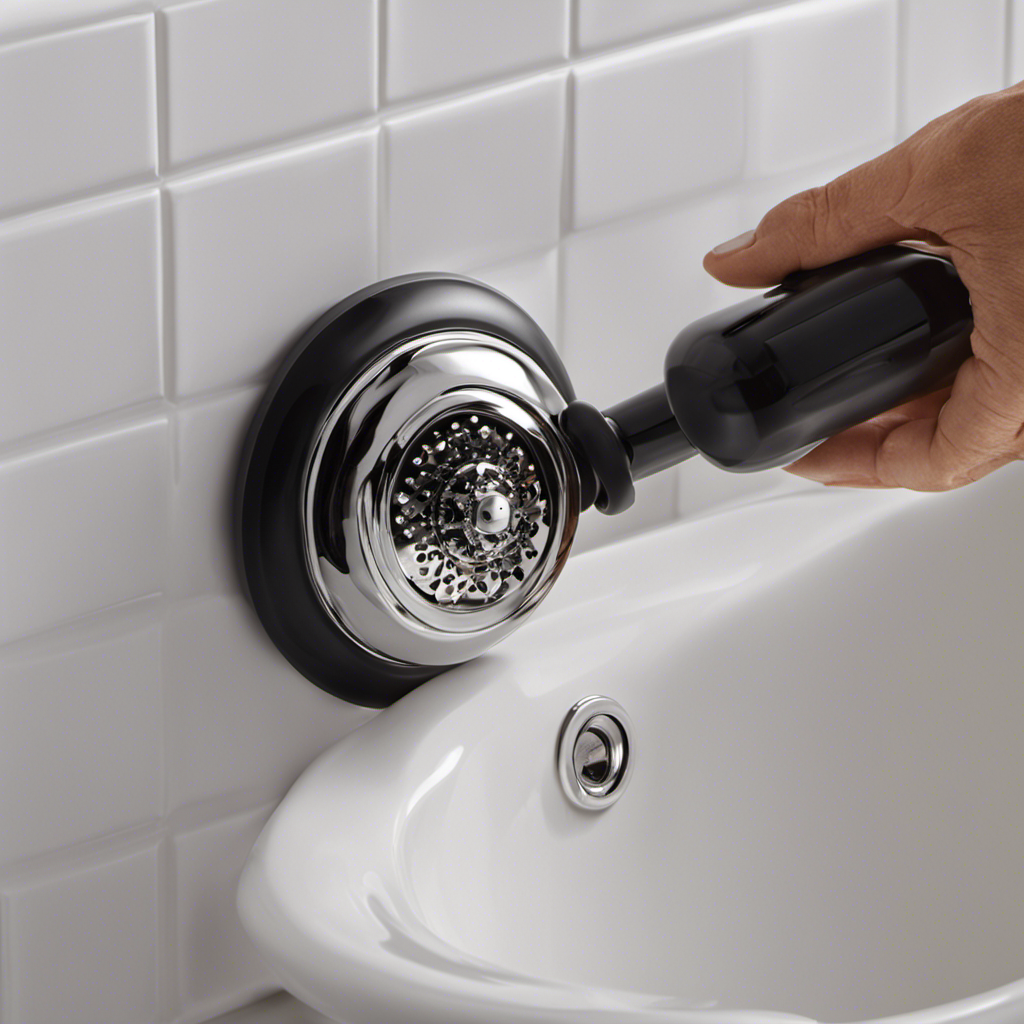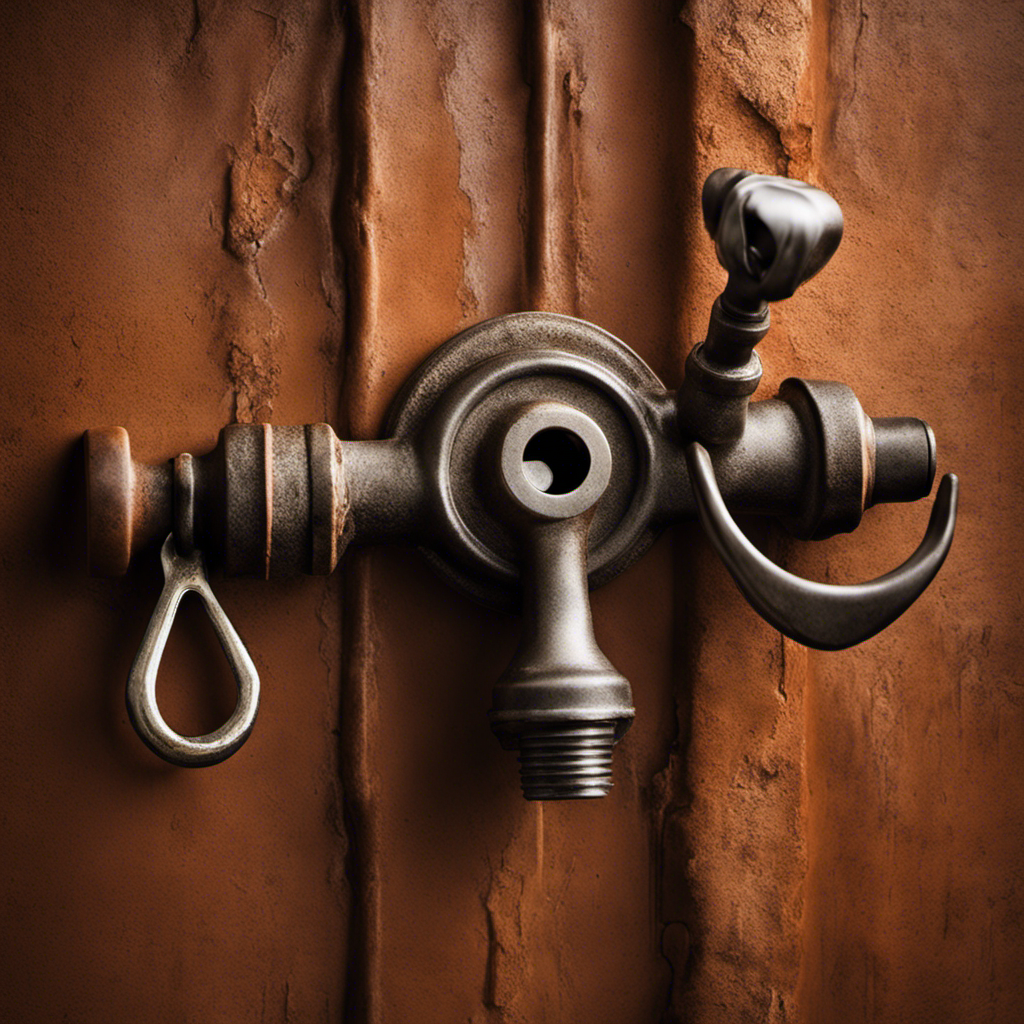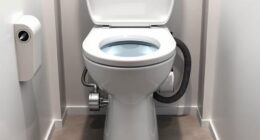Are you tired of dealing with a clogged bathtub drain? Well, I’ve got you covered! In this article, I’m going to share my expert tips and techniques for unclogging your bathtub drain quickly and easily.
From understanding the common causes of clogs to using effective tools and natural remedies, I’ll guide you step-by-step through the process.
Say goodbye to frustrating clogs and hello to a smoothly flowing drain. Let’s get started!
Key Takeaways
- Regular maintenance and cleaning of the drain can prevent clogs.
- Using a mixture of hot water and vinegar can dissolve buildup in the drain.
- Consider using a drain cover to minimize the risk of clogs and ensure smooth water flow.
- If a plunger doesn’t work, professional drain cleaning may be necessary as a last resort.
Understanding the Common Causes of Bathtub Drain Clogs
To understand why your bathtub drain is clogged, you should know the common causes of this issue. There are several factors that can contribute to drain clogs in your bathtub.
One of the most common causes is hair accumulation. As you shower or bathe, hair naturally falls out and can easily get trapped in the drain, leading to a blockage.
Another common cause is the buildup of soap scum and residue over time. This can occur if you do not clean your drain regularly.
Additionally, foreign objects such as small toys or jewelry can accidentally fall into the drain and cause a clog.
Regular maintenance is key to preventing these issues. By regularly cleaning your drain and using a drain cover, you can minimize the risk of clogs and ensure smooth water flow.
Essential Tools and Materials for Unclogging a Bathtub Drain
You’ll need a few essential tools and materials for clearing out a clogged bathtub drain.
When it comes to choosing suitable products, there are a few options available. One popular choice is a drain cleaning solution, which can be easily found at most hardware stores. These solutions typically contain chemicals that break down the clog and clear the drain.
Another alternative method of unclogging is using a plunger. It’s important to choose a plunger specifically designed for drains, as it will have a flat, wide surface that covers the drain completely.
Additionally, having a pair of gloves and a drain snake can also be helpful in removing any debris or hair that may be causing the clog.
With these tools and materials, you’ll be well-equipped to tackle any clogged bathtub drain.
Step-By-Step Guide to Removing Hair and Debris From the Drain
When it comes to maintaining a clean and functional bathtub drain, there are a few key points to keep in mind.
First, preventing future clogs is essential to avoid the hassle of unclogging the drain again in the future.
Second, choosing effective tools for unclogging can make the process much easier and more efficient.
Preventing Future Clogs
Maintaining a regular cleaning schedule for your bathtub drain can help prevent future clogs. By taking a few simple steps, you can keep your drain clear and free from debris.
First, make sure to remove any visible hair or debris from the surface of the drain after each use. This can be done using a small brush or your fingers.
Next, pour a mixture of hot water and vinegar down the drain once a week to dissolve any soap scum or buildup.
Finally, consider using a drain cover to catch any hair or larger particles before they have a chance to go down the drain.
Choosing Effective Tools
To choose effective tools for keeping your drain clear, consider using a small brush or your fingers to remove visible hair or debris after each use. This simple step can prevent clogs from forming and ensure the proper functioning of your bathtub drain. However, if a clog does occur, it is important to have the right tools on hand to address the issue. There are several options available, each suited for different types of clogs. Here is a table outlining some common tools and their appropriate usage:
| Tool | Usage |
|---|---|
| Plunger | Use to create suction and dislodge minor clogs |
| Drain Snake | Ideal for removing deeper clogs or blockages in the pipe |
| Chemical Drain Cleaner | Effective for breaking down organic matter causing clogs |
| Wet/Dry Vacuum | Can be used to remove stubborn clogs or excess water |
| Bent Wire Hanger | Useful for retrieving small objects causing blockages |
Safe Drain Cleaning
Using chemical drain cleaners can be effective in breaking down organic matter that causes clogs in your bathtub drain. However, it’s important to consider eco-friendly alternatives and professional drain cleaning services for a safer and more sustainable approach.
Here are some reasons why:
-
Eco-friendly alternatives:
-
Baking soda and vinegar mixture: This natural combination creates a fizzy reaction that can help break down clogs without harmful chemicals.
-
Boiling water: Pouring boiling water down your drain can help dissolve grease and other substances causing the clog.
-
Professional drain cleaning:
-
Expert knowledge: Professionals have the experience and expertise to identify the root cause of the clog and use the most suitable methods to unclog your drain.
-
Advanced equipment: Drain cleaning professionals have access to specialized tools and equipment that can effectively remove stubborn clogs without damaging your plumbing system.
Transitioning into the next section about effective techniques for using a plunger to clear the clog, let’s explore a manual approach that can be easily done at home.
Effective Techniques for Using a Plunger to Clear the Clog
One effective technique for clearing a bathtub drain clog is by simply using a plunger. This common household tool can work wonders in dislodging the blockage and restoring the flow of water.
To use a plunger, start by filling the bathtub with enough water to cover the rubber cup. Place the plunger over the drain, making sure it forms a tight seal. Then, vigorously push and pull the plunger up and down for about 30 seconds. This motion creates suction and pressure that can break up the clog.
If the plunger doesn’t work, there are alternative methods you can try, such as using a drain snake or a chemical drain cleaner. However, if all else fails, it may be time to call in the professionals.
Professional drain cleaning services have specialized tools and expertise to tackle even the toughest clogs and ensure your bathtub drain is clear and flowing smoothly once again.
Using Natural Remedies to Dissolve and Remove Stubborn Clogs
If a plunger doesn’t work, there are alternative methods you can try to dissolve and remove stubborn clogs. Using natural remedies can be a safer and more environmentally friendly option compared to chemical drain cleaners. Here are two alternative methods you can try:
-
Baking soda and vinegar:
-
Start by pouring half a cup of baking soda down the drain.
-
Follow it up with half a cup of vinegar.
-
Cover the drain and let the mixture sit for about 30 minutes.
-
Finally, flush the drain with hot water.
-
Salt and hot water:
-
Mix half a cup of salt with boiling water.
-
Pour the mixture down the drain and let it sit for a few minutes.
-
Flush the drain with hot water.
These natural remedies can effectively break down clogs and help restore the flow of water in your bathtub without the use of harsh chemicals.
Preventive Measures to Keep Your Bathtub Drain Clean and Clog-Free
To maintain a clean and clog-free bathtub drain, it’s important to incorporate daily hair removal and regular drain maintenance into your routine.
Hair is one of the main culprits when it comes to clogging drains, so taking a few minutes each day to remove any loose hair from the drain can significantly reduce the risk of clogs.
Additionally, performing regular drain maintenance, such as using a drain cleaner or a plunger, can help keep your drain clear and prevent any build-up that could lead to clogs in the future.
Daily Hair Removal
Regularly removing hair from your drain can help prevent clogs in your bathtub. As someone who has dealt with clogged drains before, I understand the importance of daily hair care. Here are some alternative methods to keep your drain clean:
-
Use a drain guard: Place a drain guard over your bathtub drain to catch hair and prevent it from going down the drain.
-
DIY drain cleaner: Mix equal parts vinegar and baking soda, pour it down the drain, and let it sit for a few minutes. Then, flush it with hot water to remove any hair or debris.
Regular Drain Maintenance
Now that we’ve discussed the daily hair removal routine, let’s move on to the next step in maintaining a clean and unclogged bathtub drain – regular drain maintenance.
It’s essential to perform regular drain cleaning to prevent clogs and keep your drain flowing smoothly. Over time, debris such as hair, soap scum, and other particles can build up in your drain, causing blockages. By regularly cleaning your drain, you can remove this buildup and prevent clogs from forming.
Additionally, using drain strainers is crucial in preventing larger particles from entering your drain and causing blockages. These strainers act as filters, catching hair and other debris before they can go down the drain.
Conclusion
Well, there you have it! With the knowledge and tools I’ve shared with you, unclogging your bathtub drain should be a breeze.
It’s amazing how a simple plunger or a natural remedy can work wonders.
But hey, who needs preventive measures, right? Just let those clogs build up and enjoy the thrill of a clogged drain surprise. Because let’s be honest, there’s nothing more exciting than standing ankle-deep in water while taking a shower.
Happy clogging, folks!
